Story of Coffee Variety Taste and Flavor grading system in eight Coffee producing areas of Central and South America
Many friends who come to Qianjie for the first time to buy coffee beans will be surprised by the preferential price of Qianjie coffee, but Qianjie old fans should know that Qianjie's most cost-effective coffee is the rations bean series. These rations beans are carefully selected from Qianjie, which can represent the most classic flavor of the major coffee producing areas in the world. Qianjie wants coffee rookies to drink the legendary coffee flavor, so the coffee beans chosen have very obvious characteristics. Friends who are interested in rations beans will certainly ask what producing areas are there in front street rations beans?
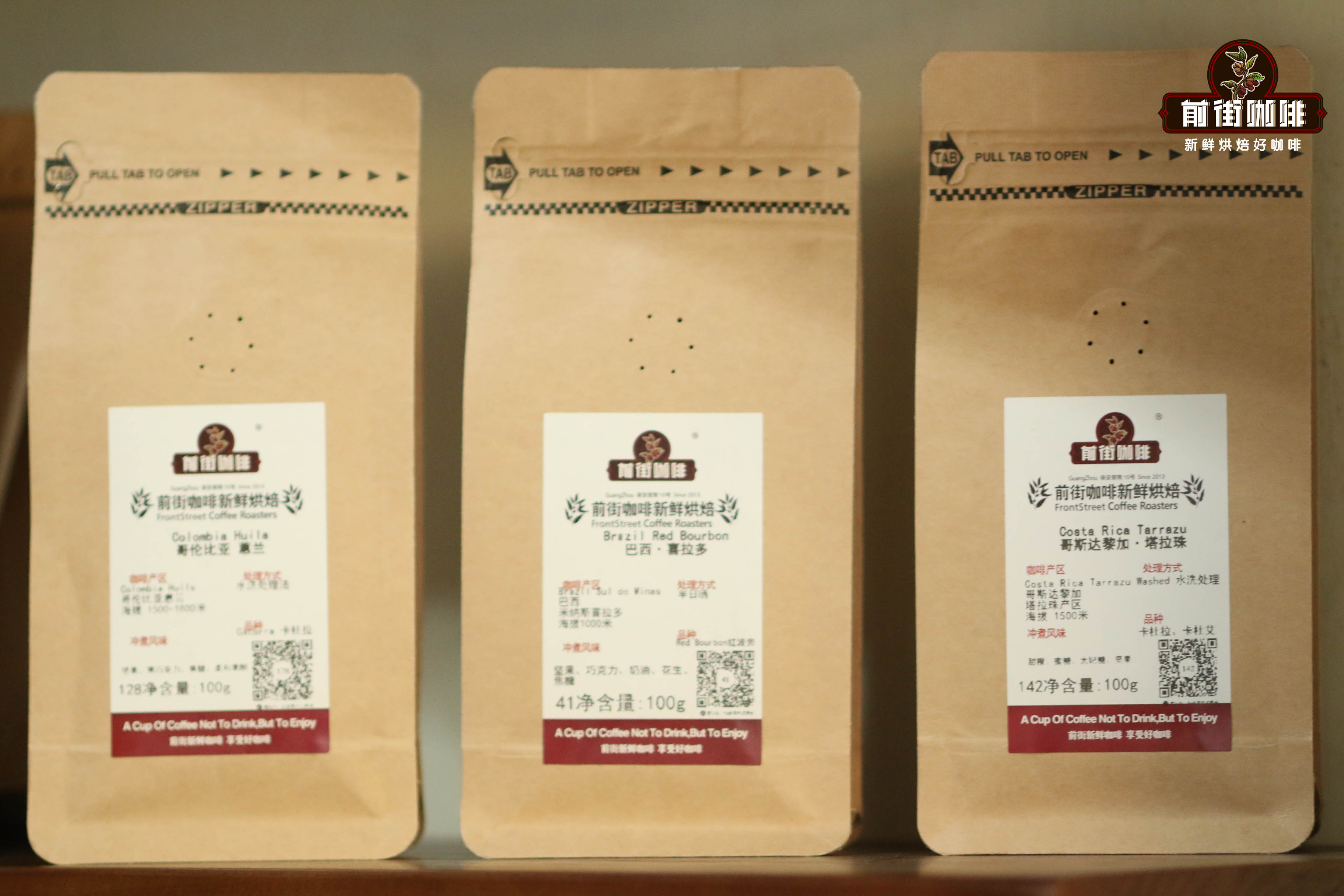
Qianjie is here to give you a brief comb. At present, the food rations in Qianjie are mainly concentrated in Africa, Asia and Central and South America. Apart from the most classic Yega Chuefei and heavy Flavor Star favorite Mantenin, what Qianjie would like to introduce to you today is this tiny special south fruit of Guatemala. As one of the three largest coffee producing areas in the world, Latin America produces many coffee beans with classic and unique flavor, among which Guatemalan coffee is known as Latin American coffee beans. Qianjie Coffee has a Guatemalan coffee in the rations bean series, which represents the most typical flavor of the region-rich fruit, mellow, with a chic smoky finish.
How did this special coffee flavor come from? Qianjie just likes to get to the bottom of it. The flavor of a type of coffee is related to many factors, such as artificial, treatment, coffee tree growth and planting environment. Based on the fact that there are certain standards for offline production of Qianjie coffee, let's not consider the flavor effect of baristas on coffee in the brewing process. Let's take a look at the growing environment of coffee in Guatemala.
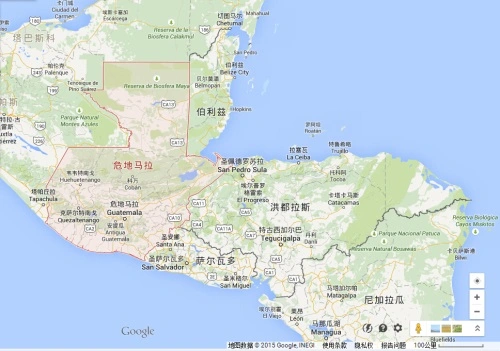
Here is a map of the world of Guatemala, you can see from this map: Guatemala is bordered by Mexico to the north, Honduras and El Salvador to the south, the Caribbean Sea to the east and the Pacific Ocean to the west. At the same time, Guatemala is located in the tropics, the northern and eastern coastal plains have a tropical rain forest climate, and the southern mountains have a subtropical climate. The year is divided into two dry and wet seasons, with wet seasons from May to October and dry seasons from November to April of the following year. The narrow and fertile flatlands on the Pacific side of Guatemala have a tropical climate. The central plateau is also the cultural center of Guatemala, where temperatures are mild all year round at an altitude of 1300 to 1800 meters, with daily temperatures between 18 and 28 ℃, and higher levels tend to be colder in January and February. The annual precipitation is 2000-3000 mm in the northeast and 500-1000 mm in the south. The average elevation of Guatemala is high, with coffee belts distributed over 1500 meters and between 14 and 16 degrees north latitude, it is the easiest to grow extremely hard beans, all of which are washed, of which 45% are of high quality, a high proportion, and a small amount of Robusta.
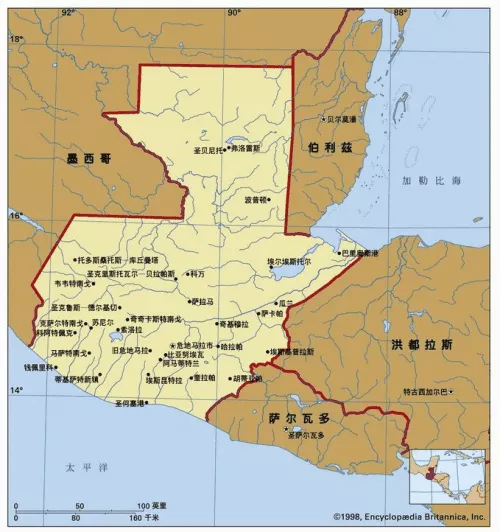
Qianjie was really surprised when looking for a topographic map of Guatemala: 2/3 of the territory is mountainous and plateau. There are Kuchu Matanes Mountains in the west, Madre Mountains in the south, volcanic belts in the west and south, with more than 30 volcanoes. Tahumurco volcano is 4211 meters above sea level, which is the highest peak in Central America. Earthquakes are frequent. There are Petten lowlands in the north. There are narrow coastal plains on the Pacific coast. The major cities are mostly distributed in the intermountain basins in the south. The northern lowland plain Peten is a tropical rain forest, and the volcanoes on the central highlands can reach 4200 meters. The Guatemalan national emblem is round, with an unfolded scroll in the middle of the blue circle.
Qianjie believes that the above can be called the unique conditions of coffee cultivation: sitting on the mountains and the sea, tropical climate, volcanic geology. The friends who often consult the popular science articles of Qianjie Coffee must know that high altitude is very important to the development of high-quality coffee beans, and the large span of altitude also means a changeable micro-climate.
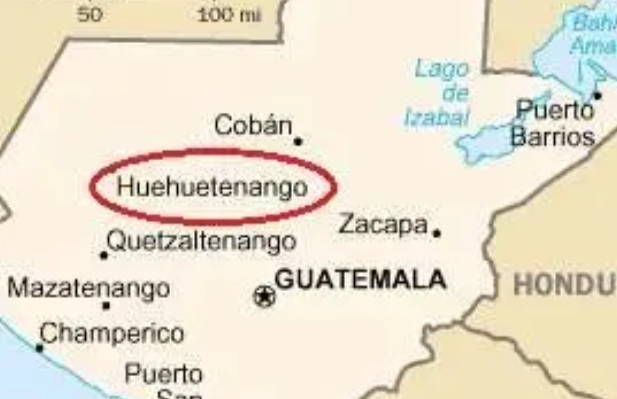
A number of coffee beans from Guatemala were tested in the cup in the front street, and everyone was surprised by the smoky feeling. The sense of smoke appears in coffee beans in other producing areas and is likely to be recognized as a defective taste in the front street, because the feeling of smoke produces the feeling of a card in the throat when the coffee is drunk. The smoky taste drunk in Guatemala is a strong, rough but still comfortable taste. If you think Qianjie's speech is a little psychedelic, you can go to Qianjie Coffee's online Taobao shop to find this coffee and you will know for yourself.
According to Qianjie, Guatemala knew how to grow and drink coffee as early as 1747, and Father Jesuit introduced coffee trees to Guatemala in 1750. In 1845, with the establishment of the Guatemalan Coffee planting and Promotion Committee, coffee became an important cash crop in Guatemala. With the vigorous promotion of the government, coffee accounted for 90% of Guatemala's total export in 1880. But how can everything be so smooth? In order to achieve greater coffee production, the authorities targeted aboriginal land, forcing them to sell their land and move to more barren places. The second exploitation came from large enterprises. During the Great Depression of the global economy in 1930, the Jorge Ubico in power tried to drive down costs in order to stimulate the export market, and at the same time ceded more power and land to the United Fruit Enterprise Center (UFC) in the United States. After Jorge Ubico stepped down, the incoming president, Arbenz, wanted to reclaim some land in UFC and redistribute it to farmers, but in 1954 the Arbenz government was overthrown by a coup launched by the CIA of the CIA. Poverty, uneven land distribution, famine, discrimination against indigenous peoples and other factors led to civil war (1960-1966), but these problems still exist today, so they have a certain impact on the development of Guatemalan coffee.
Guatemala is divided into several coffee producing areas, you can take a brief look at the following picture. Next, Qianjie will take the two existing Guatemalan coffee beans in the store as an example to introduce the two famous coffee producing areas of Guatemala, Antigua and Mini Nanguo.
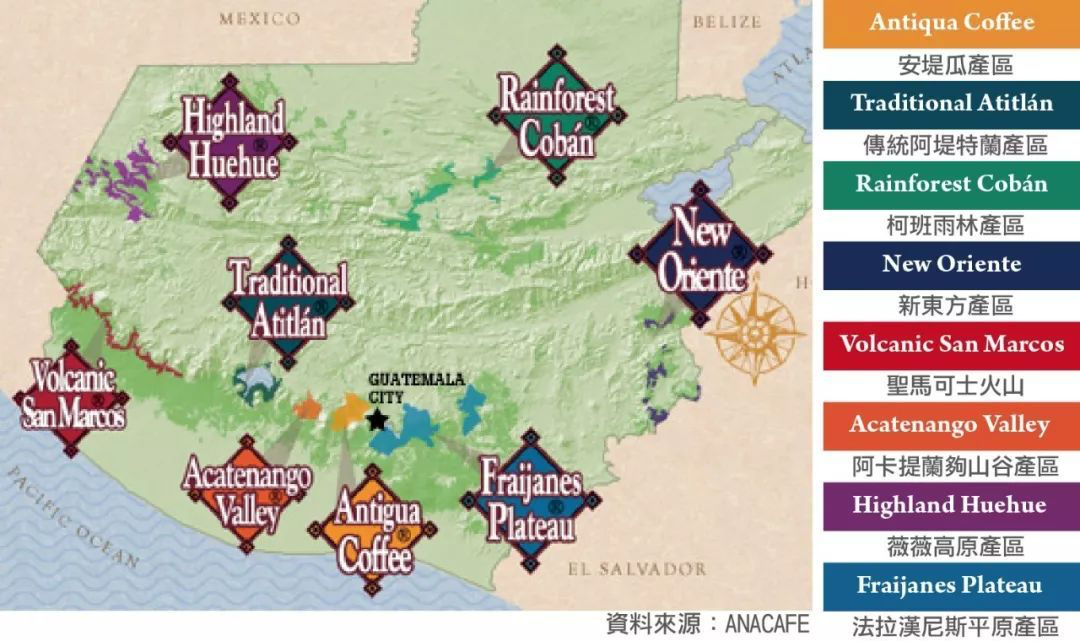
Among the rations beans on the front street is a coffee from the Mini Tenan fruit producing area, which is located in the highlands of northwestern Guatemala and is planted at an altitude of 1800-2100 meters. It is the highest coffee-producing area in the country and is famous for producing high-quality beans. Due to the large number of rivers and lakes in Guatemala, rich mountains and water resources in Vivete Nanguo region, dry climate but abundant water resources, and complete water conservancy facilities in this area, coffee is mostly washed and processed, and the harvest period is from January to April.
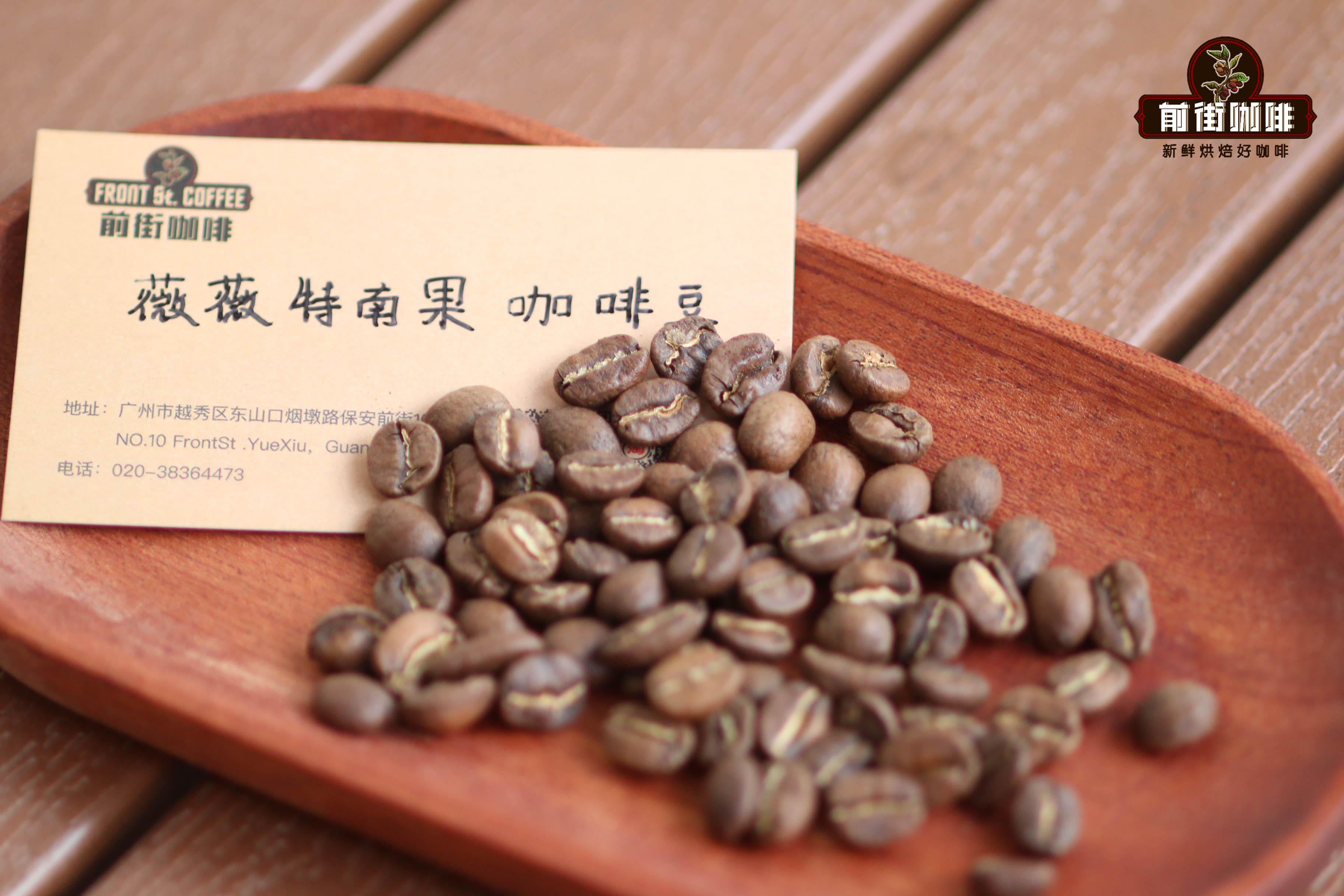
Guatemala Vivette Nan Fruit country: Guatemala producing area: Vivette Nan Fruit altitude: 1500-2000 m varieties: bourbon, Kaddura, Kaduai treatment: washing treatment flavor: citrus, berry acidity, lemon peel, nutty aroma in the middle, aftertaste of tea.
Vivette Nango is an important coffee producing area in Guatemala, and its name is also interesting to pronounce. The name comes from Nahuatl, which means "land of the ancients (or ancestors)." Vivette Nan Fruit is located in the highlands of northwestern Guatemala, growing at an altitude of 1800-2100 meters. It is the highest coffee-producing area in the country and is famous for producing high-quality beans. Due to the large number of rivers and lakes in Guatemala, the Vivette Nanguo region is rich in mountains and water resources, dry climate but abundant water resources, and complete water conservancy facilities in the region, coffee is mostly washed and processed. Qianjie tested the coffee beans in the producing area in the cup, with fragrant, clear fruit flavor and refreshing flavor. Due to the high altitude, coffee beans are of good quality, rich flavor and full grains.
The Antigua producing area is located in the entire area of the Madre plateau in the opographically Mountains that pass through Guatemala. Because of its natural conditions, Antigua has become the most famous of the eight major producing areas in Guatemala. High altitude, unique volcanic soil, shade planting, so that coffee beans have a unique flavor.
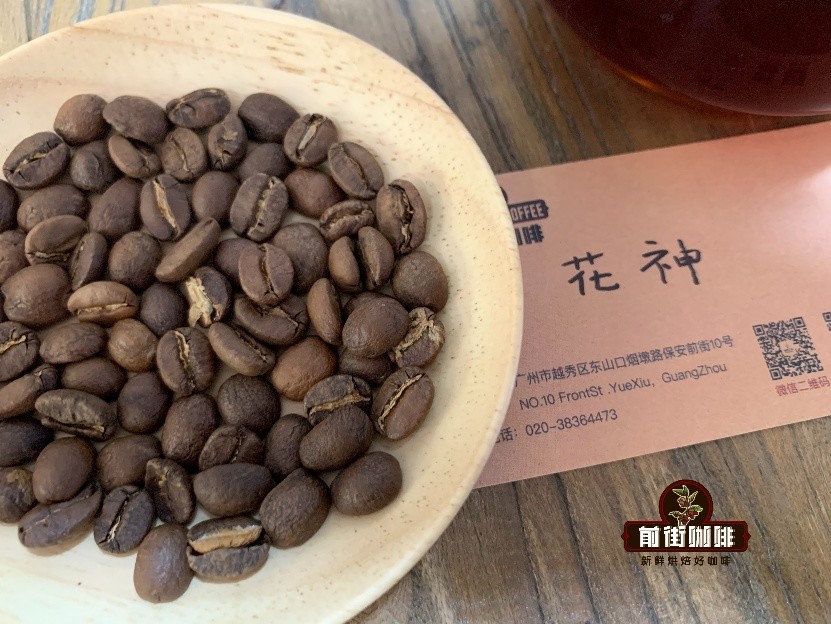
Antigua flower god of Guatemala
Origin: Antigua trader: Laminita altitude: 1200-1600 m varieties: bourbon, Kaddura treatment: washing treatment
Brewing flavor: the lemon-like acidity of the entrance at high temperature, the juice-like taste slowly cooled with a hint of white flowers, and then the cocoa and slightly smoky feeling add layers to this coffee. finally, the caramel-like finish draws a perfect end to the cup of coffee.
Antigua has little rainfall in summer and occasionally frosts because it is too cold in winter, which is actually not suitable for the growth of coffee trees, but fortunately it is located in the active volcanic zone. After the volcanic light stone falls into the soil after cooling, because these light stones have many fine holes, they are very easy to moisturize. In addition, a large number of shade trees are planted in the manor, so that coffee trees will not suffer cold damage in winter, these factors to overcome adverse conditions. Coupled with the great temperature difference between day and night, Antigua forms a unique micro-climate, making the coffee beans here have a light smoky flavor and strong fruity aroma.
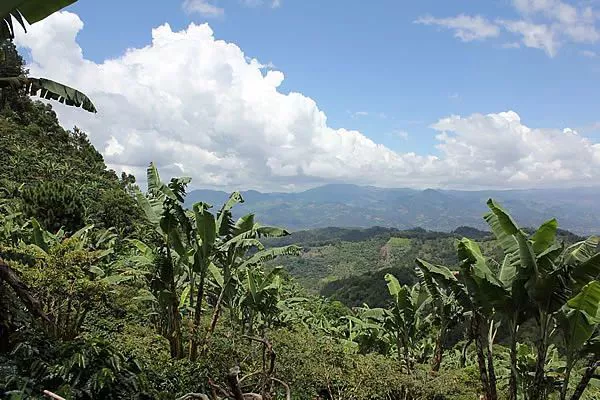
In the front street here, you need to tell the buddies who have just come into contact with boutique coffee in front of the screen that coffee treatment affects the flavor of coffee to a certain extent. Qianjie is well aware of this, so most of the rations beans and other online coffee beans are washed. Of course, get rid of some coffee beans that are famous for their special treatment. The purpose of Qianjie is to enable coffee beginners to have the most basic sensory understanding of coffee in major producing areas of the world.
And the grading of coffee beans often confuses many people. Coffee grades vary from country to country.
Like Costa Rica, El Salvador, Mexico, Honduras and other Central American countries, Guatemala's classification is based on altitude. Coffee produced at high altitudes is generally of higher quality than at lower altitudes, because the higher the altitude, the lower the temperature. At high elevations, the slower the coffee grows, the more beneficial it will be to the accumulation of good substances. That's why there is a way to classify quality by altitude.
HB (extremely hard beans): planted at 1500-1700 meters above sea level
HB (hard beans): planted at 1350-1500 meters above sea level
SH (slightly hard beans): planting is 1200-1350 meters above sea level
Extra Prime (extra high quality water washed beans): plant 1000-1200 meters above sea level
Prime (high quality water washed beans): planted at an altitude of 850m-1000 m
Good Washed (good quality washed beans): plant 700-850m above sea level.
At the beginning of the article, Qianjie told everyone that there are certain standards for coffee production in stores under the Qianjie line, so what is this standard? Here are some parameters for coffee brewing for your reference only:
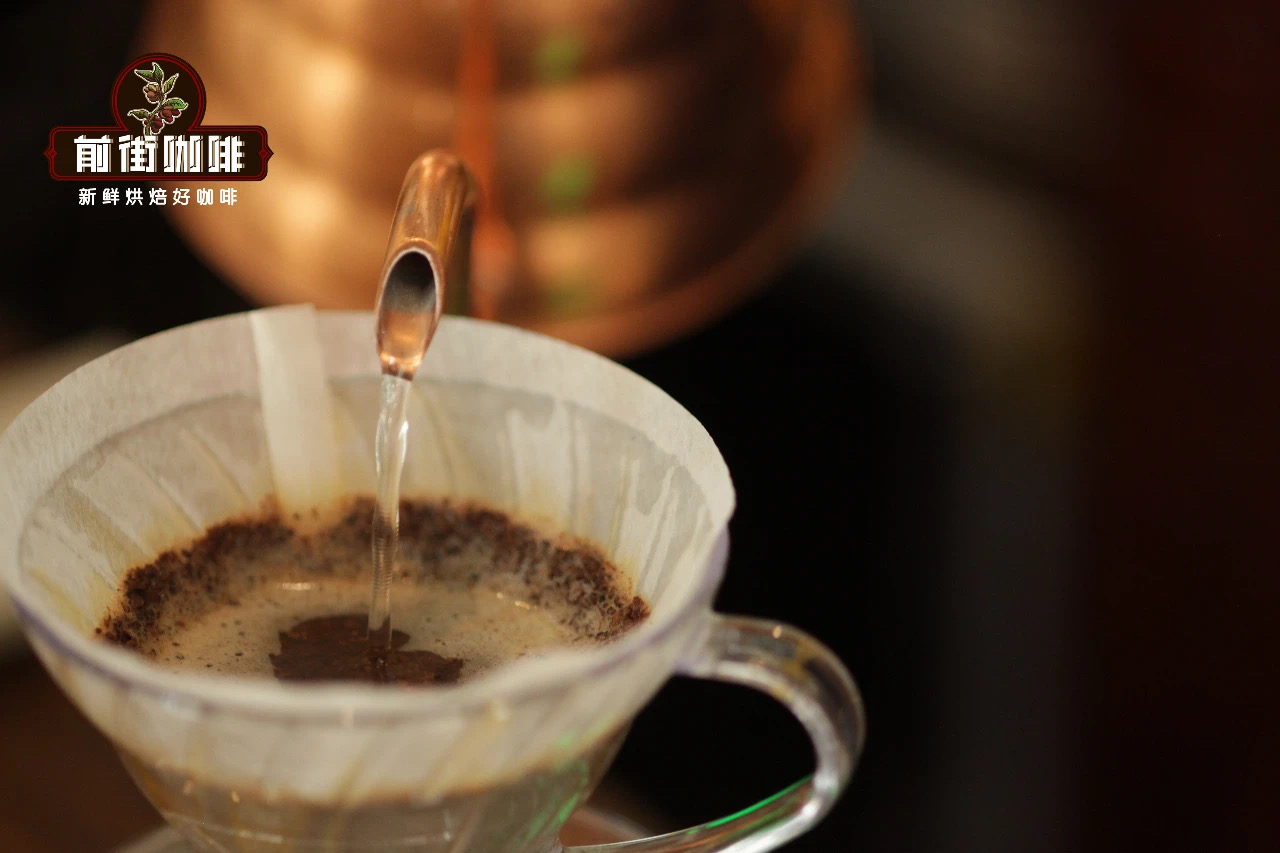
Filter cup: Hario V60
Water temperature: 90-91 degrees
Degree of grinding: medium fine grinding / No. 20 sieve bowl sieve powder to 80%
Ratio of powder to water: 1:15
Amount of powder: 15g
Qianjie three-stage cooking technique: first preheat the filter cup and the sharing pot. Pour in 15 grams of coffee powder and gently pat to make the coffee powder surface smooth. Start the first stage of water injection and inject 30 grams of water into the circle for 30 seconds. Ideally, the coffee powder is evenly watered and bulged with a small "coffee burger". The second stage is injected 30 seconds later, the height of the water column is 3-5cm, and the center is injected 95 grams of water around the concentric circle. The total amount of water injection is 125g. Observe that the coffee liquid level should be all golden coffee foam. When the powder bed is about to be exposed, start the last stage of water injection, this section of water injection 100 grams, slowly draw a circle around the concentric circle, the flow is consistent. When all the coffee liquid from the filter cup flows into the next pot, remove the filter cup and end the extraction. The total duration is 2 minutes 08 seconds.
Professional coffee knowledge exchange more coffee bean information please follow the coffee workshop (Wechat official account cafe_style)
For more boutique coffee beans, please add private Qianjie coffee on Wechat. WeChat account: kaixinguoguo0925
Important Notice :
前街咖啡 FrontStreet Coffee has moved to new addredd:
FrontStreet Coffee Address: 315,Donghua East Road,GuangZhou
Tel:020 38364473
- Prev
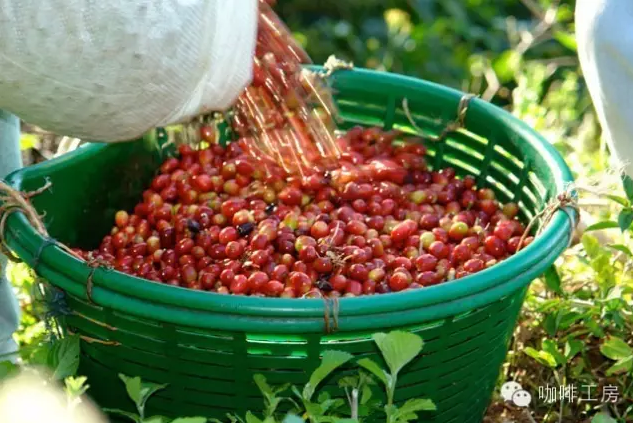
Arabica mutant iron skin card raw bean, how to taste blue mountain, Yunnan small grain iron skin card kind flavor
For professional baristas, please follow the coffee workshop (Wechat official account cafe_style) Arabica species (scientific name CoffeeArabica). The origin of Arabica species is Ethiopia's Abyssinia Plateau (present-day Ethiopian Plateau). In the early days, it was mainly used as medicine, and the habit of baking and drinking was developed in the 13th century.
- Next
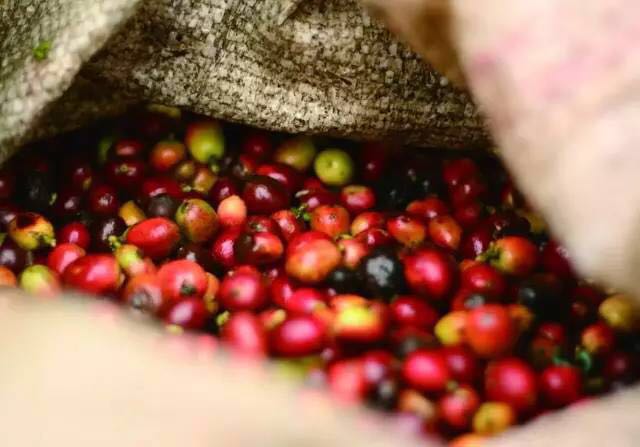
The characteristics of Antigua coffee in Guatemala, the flavor and characteristics of Guatemala.
Guatemala is a big coffee producer in Central America, ranking eighth in the world in terms of output. Guatemala, whose name comes from the Mayan language, means thelandofmanytrees, the country of the forest. Located in Central America, it is known as the pearl in the crown of China and the United States. Although Guatemala has a limited land area, it has a rich and diverse climate. Countries famous for lakes and volcanoes, volcanic soil, precipitation,
Related
- Detailed explanation of Jadeite planting Land in Panamanian Jadeite Manor introduction to the grading system of Jadeite competitive bidding, Red bid, Green bid and Rose Summer
- Story of Coffee planting in Brenka region of Costa Rica Stonehenge Manor anaerobic heavy honey treatment of flavor mouth
- What's on the barrel of Blue Mountain Coffee beans?
- Can American coffee also pull flowers? How to use hot American style to pull out a good-looking pattern?
- Can you make a cold extract with coffee beans? What is the right proportion for cold-extracted coffee formula?
- Indonesian PWN Gold Mandrine Coffee Origin Features Flavor How to Chong? Mandolin coffee is American.
- A brief introduction to the flavor characteristics of Brazilian yellow bourbon coffee beans
- What is the effect of different water quality on the flavor of cold-extracted coffee? What kind of water is best for brewing coffee?
- Why do you think of Rose Summer whenever you mention Panamanian coffee?
- Introduction to the characteristics of authentic blue mountain coffee bean producing areas? What is the CIB Coffee Authority in Jamaica?

